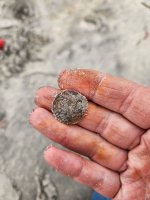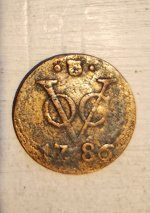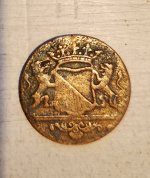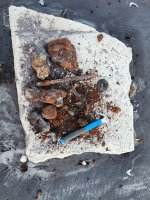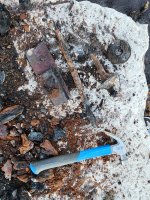Extreme NJ beach erosion swept in waves of iron shipwreck encrustations which after hammering them out included a few old ship spikes. I also found plenty of the usual Clad found from the early to mid 1900's,
But the standout find was this 1786 Dutch "Duit" coin from the Dutch East India Trading Company, which marked their coins with a distinctive interlocking "VOC" (Verenigde Oostindische Compagnie) on the obverse side. This coin was considered by many to be the "original penny" of the Colonies since the Dutch Royalists settled so mutch of the East Coast in the 1700's and these coins were widely circulated in New York, New Jersey, and many of the surrounding areas (many of the US' most prestigious East Coast Universities were founded by the Dutch Royalists). The coin represents a visual memory of the early 1600's formed VOC which was perhaps the most dominant trading company in Asia and the world at the time. It is a remarkable a snapshot into the history of one of the most remarkable multi faceted "Corporation" in the history of the 1600's to 1800's.... JB
But the standout find was this 1786 Dutch "Duit" coin from the Dutch East India Trading Company, which marked their coins with a distinctive interlocking "VOC" (Verenigde Oostindische Compagnie) on the obverse side. This coin was considered by many to be the "original penny" of the Colonies since the Dutch Royalists settled so mutch of the East Coast in the 1700's and these coins were widely circulated in New York, New Jersey, and many of the surrounding areas (many of the US' most prestigious East Coast Universities were founded by the Dutch Royalists). The coin represents a visual memory of the early 1600's formed VOC which was perhaps the most dominant trading company in Asia and the world at the time. It is a remarkable a snapshot into the history of one of the most remarkable multi faceted "Corporation" in the history of the 1600's to 1800's.... JB
Attachments
Upvote
25



